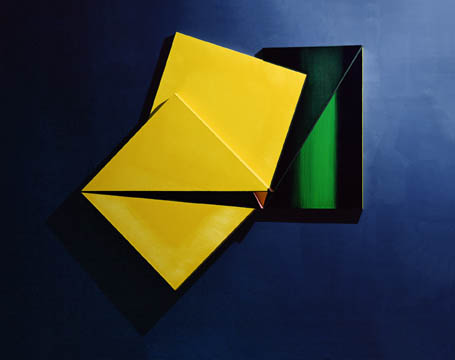December 17
Born in Montreal in 1932, Dorothea was often sick as a child, becoming an avid reader. She studied art and dance and had an early rebellious streak which her teachers thought would be best fed by a stint at… Black Mountain College! She received a scholarship to attend in 1950 at the age of 18.
She studied painting, music, and dance with all the amazing teaching artists, but most fondly remembers classes with Max Dehn, mathematician. After many years of working and exploring in dance, studio work, and performance art, Dorothea returned to painting and three dimensional installation work. Though many female BMC students continued to craft or teach, not many were able to become thriving visual artists like Rockburne who still exhibits and creates now in her 90s!
Most of her work draws inspiration from her love of math and astronomy.
“I wanted very much to see the equations I was studying, so I started making them
in my studio…”─Dorothea Rockburne

Links for Further Exploration
- Artist website
- National Museum of Women in the Artists: Dorothea Rockburne
- VIDEO: Inside the Life and Studio of Dorothy Rockburne
(at the age of 93!) - Interview: The Magic of Math and Art: Dorothea Rockburne In Conversation with Philip Ording
- ArtNews: A Winning Formula: Dorothea Rockburne at the Parrish
Further Inspirations
Rockburne wanted to see the equations she studied visually expressed. The Institute for Figuring is dedicated to just such an enterprise: “the poetic and aesthetic dimensions of science, mathematics and engineering.” The founders of this institute are the mathematical sisters responsible for the Crochet Coral Reef Project. Like the Tempestry Project, the Crochet Coral Reef project seeks to use the fiber arts to bring attention to a global issue.
Invitation to Creativity
Rockburne was inspired by mathematics, especially mathematical shapes. Those of us who craft with yarn are no stranger to the big M, especially if we’ve had to adapt a pattern or just count stitches, again… and again! Another, less brain hurting, and fun way to engage in math and art is with the ancient Japanese paper art of origami. Polyhedra origami is another form of data visualization.
Find the origami paper in your Creativity box (or you can also use regular or recycled papers found in your home). Try some of the patterns for creatures or mathematical shapes linked below:
- Origami Instructions
- Printable Tetrahedron instructions
- Math Shapes with Origami
- VIDEO: Math & Origami
Take pictures of your creations, up close and far away, with strong light to create shadows. Share on the blog if you are willing!
